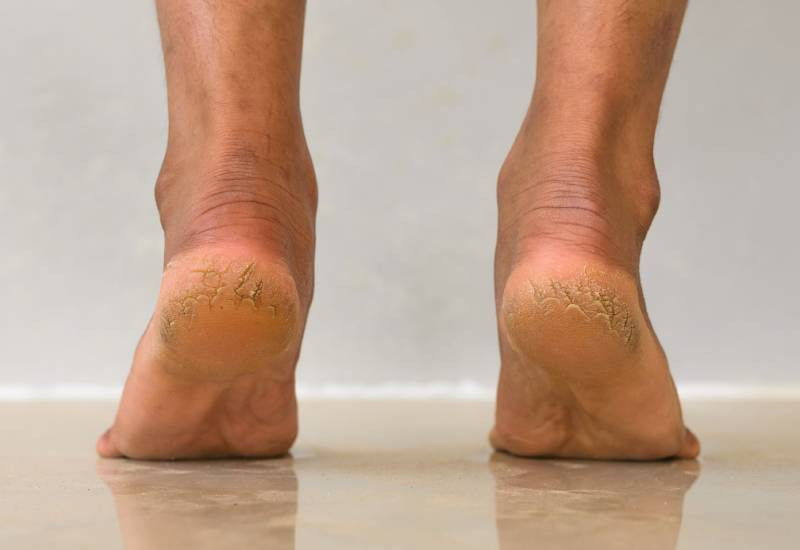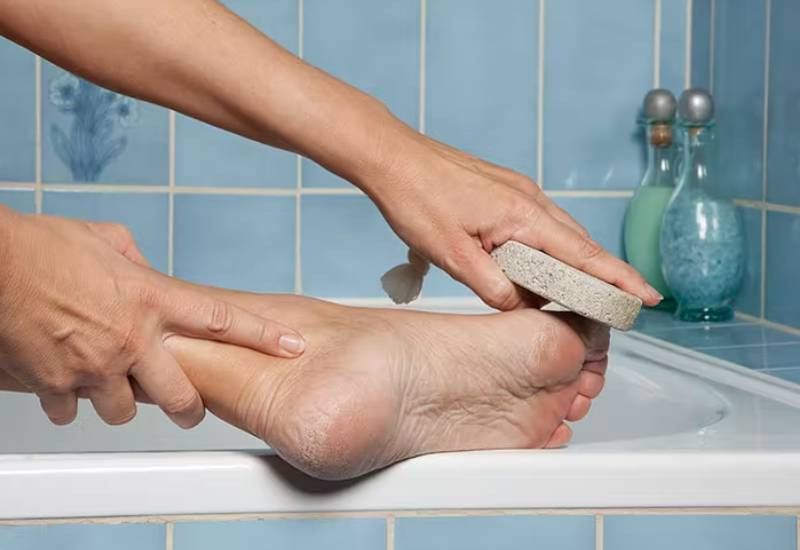
Cracked heels can be painful, both physically and emotionally. People who suffer from cracked heels often resort to keeping them hidden in socks and shoes, never daring to wear open sandals out in public.
Unfortunately, hiding your cracked feet is not a viable long-term solution. To heal your heels, you have to tackle the problem head-on. But do not worry, when you understand what caused the fissures on your heels, you are halfway to resolving the problem.
Since there are several different causes of cracked feet, it might take you some time to pinpoint what has led to your feet’s condition. In many people, cracked feet are a symptom of skin conditions such as eczema and psoriasis.
Other causes of cracked heels include diabetes, hypothyroidism, sjögren’s syndrome, juvenile plantar dermatosis, and infections such as athlete’s foot. Cracks may also form on your feet due to biomechanical factors such as flat feet, heel spurs, prolonged periods of standing (especially on hard floors), open-healed or poorly fitting shoes, as well as dry, cold weather.
The great news is that cracked heels are easy to treat, in most cases. If you have deep cracks or the cracks get infected or start bleeding, you should consult a doctor. Otherwise, you can try the following remedies to heal your cracked soles.
Keep your feet clean
If you are prone to cracked heels, it is important to be diligent with keeping them clean and moisturised. Dirt and dust are likely to exacerbate the problem – leading to deeper or infected cracks.
In addition, avoid the temptation to go for harsh soaps for cleaning your feet. Instead, invest in gentle cleansers (either in gel or milk form) to avoid further drying out your soles.
While at it, make sure to carefully read any foot-cleansing products. Avoid products that contain fragrance and alcohol as they might be too harsh for your delicate feet.

Exfoliate with a pumice stone
Gently scrubbing your cracked heels with a pumice stone is a simple but effective remedy. The pumice stone helps slough off dead skin cells and keep any dry areas or calluses down.
Before scrubbing your feet, it is advisable to first soak them. You can create a simple foot soak using Epsom salt, an essential oil, and warm water. Soak your feet for about 15 minutes to soften and loosen dead skin cells before scrubbing them off.
Do not forget to clean and disinfect the pumice stone after each use. The crevices in the stone that make it a good exfoliator can fill up with dead skin cells, providing fertile ground for bacteria to flourish.
Focus on moisturising
Whether your goal is to prevent or treat cracked heels, the best solution is to stay moisturised. If you suffer from cracked soles, you should be applying moisturiser on them at least twice a day – in the morning and the evening before going to bed.
Go for emollient or humectant moisturisers. Emollients fill in the cracks, making your feet feel smoother and more flexible as well as reducing water loss. On the other hand, humectants attract water from the environment to maintain moisture on your heels.
During dry seasons, humectants can draw water from the lower layers of your skin – resulting in even more dehydration. If you go for a humectant moisturiser, combine it with an occlusive to seal in moisture. Occlusives are products such as petroleum jelly, which we will explore in the next tip.
Seal in moisture with petroleum jelly
After applying an emollient or humectant moisturiser, applying a layer of an occlusive product is key to sealing in the moisture. Occlusive products, such as petroleum jelly, form a film that prevents moisture from escaping the outermost layer of skin.
Scientific research has shown that petroleum jelly can reduce water loss from the outer skin by more than 98 per cent. Other than petroleum jelly, consider exploring other occlusive moisturisers and ingredients such as lanolin, mineral oil, and silicones (such as dimethicone).
The downside is that occlusives tend to be greasy, sticky, and messy. During the day, you can use lanolin, which is less greasy than petroleum jelly.
Wear 100 per cent cotton socks
Socks are a must-have for people who suffer from cracked heels. However, do not grab the first pair of socks you come across. Read the label carefully to ensure that your socks are made from natural materials such as cotton, rather than synthetic blends.
Socks made from synthetic can trap sweat and dampness on your feet – which can lead to infections. Natural materials such as cotton and wool, on the other hand, have moisture-wicking qualities that prevent excess dampness on your skin. As a bonus, wearing cotton socks also means that your feet are less likely to be stinky.
It is especially important to wear socks to bed. They help lock in the moisture while allowing your skin to breathe. They also prevent your sheets from staining from your footcare products.
Related Topics